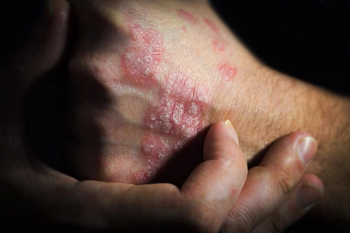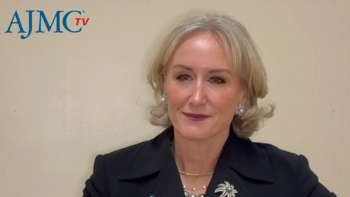
Baricitinib Reduces Disease Activity in Postmenopausal Frontal Fibrosing Alopecia
Key Takeaways
- Baricitinib showed significant reduction in disease activity in postmenopausal women with frontal fibrosing alopecia after 12 weeks of treatment.
- The study observed significant improvements in the Lichen Planopilaris Activity Index and patient-reported scalp hair growth scores.
Baricitinib demonstrated significant reductions in disease activity in postmenopausal women with frontal fibrosing alopecia over 12 weeks.
This article was originally published on
Baricitinib shows early, clinically meaningful reductions in disease activity among postmenopausal women with frontal fibrosing alopecia, according to recent findings.1
The
Frontal fibrosing alopecia, a primary cicatricial alopecia, is widely regarded as a clinical variant of lichen planopilaris (LPP). It is known to be characterized by inflammatory destruction of follicles along the frontotemporal scalp and eyebrow regions. The condition can also, ultimately, lead to irreversible hair loss and predominantly impacts postmenopausal women.
Frontal fibrosing alopecia has generally been resistant to standard topical and systemic treatments, prompting attention to be drawn to more targeted approaches. A rising amount of data implicates the JAK/STAT pathway in frontal fibrosing alopecia's pathogenesis, leading to increasing exploration of Janus kinase (JAK) inhibitors as potential agents for those with this disease.
Abbas and colleagues conducted this proof-of-concept investigation to examine whether baricitinib, a JAK inhibitor, could mitigate ongoing disease activity and prevent additional disease progression in patients living with frontal fibrosing alopecia. They used a 36-week open-label trial design, recruiting women aged 18 years or older with biopsy-confirmed frontal fibrosing alopecia as participants in their research. These subjects were evaluated at baseline and at the 12, 24, and 36-week marks.
Abbas et al provided subjects with baricitinib 4 mg as an oral, once-daily monotherapy from weeks 0 to 12. After this point, all participants continued with follow-up visits based on protocol. There were 20 women initially screened for participation. Five were shown not to meet the investigators' inclusion criteria, leaving 15 as eligible; by the time of interim analysis, 13 of these individuals had reached the 12-week evaluation point.
All of those enrolled in the analysis were postmenopausal and had biopsy-verified frontal fibrosing alopecia. The subjects each had documented failure of multiple prior therapy regimens as well. Over the 12-week period, clinically meaningful improvements were observed by Abbas and coauthors.
Patients' mean scores on the Lichen Planopilaris Activity Index (LPPAI), a composite measure of both symptoms and objective signs of the disease, were shown to have dipped substantially from 6.18 at screening to 2.26 by the 12-week mark.1 The investigative team noted the average reduction of 3.92 points attained statistical significance (P < .05), suggesting a marked inflammatory disease activity decrease among those treated.
Improvements in the disease were also noted in patient-reported measures.1 The PRO Scalp Hair Growth score rose from an average of 0.85 at baseline to 2.38 at the 12-week mark, suggesting a mean rise of 1.54 points (P < .05). In contrast, Abbas et al found patient-perceived eyebrow growth, as captured by the PRO Eyebrow measure, indicated no shifts during the same time frame.
Itch symptoms were evaluated by the team via a visual analogue scale (VAS) for pruritus.1 A decline in participants' average scores was observed, dipping from 4.38 to 3.46. This represented a reduction of 0.92 points, although this change did not meet the necessary threshold for statistical significance (P > .05).
Overall, 12 weeks of baricitinib monotherapy led to early signals of efficacy in those living with refractory frontal fibrosing alopecia.1 While subjective eyebrow improvement was notably absent by this point, subjects highlighted the presence of scalp hair growth perception along with modest reductions in pruritus. Longer follow-up was noted by Abbas and colleagues as required to determine whether these early gains translate into measurable regrowth.
References
- Abbas A, Downing T, Elewski B, et al. Baricitinib in the Treatment of Frontal Fibrosing Alopecia: Mid Trial Update. Poster presented at the 2025 Fall Clinical Dermatology Conference, Las Vegas, Nevada, Oct 23-26, 2025.
- Butera A. Frontal Fibrosing Alopecia Associated with Significantly Lower Quality of Life. HCPLive. June 27, 2022.
https://www.hcplive.com/view/frontal-fibrosing-alopecia-significantly-lower-qol .
Newsletter
Stay ahead of policy, cost, and value—subscribe to AJMC for expert insights at the intersection of clinical care and health economics.












































